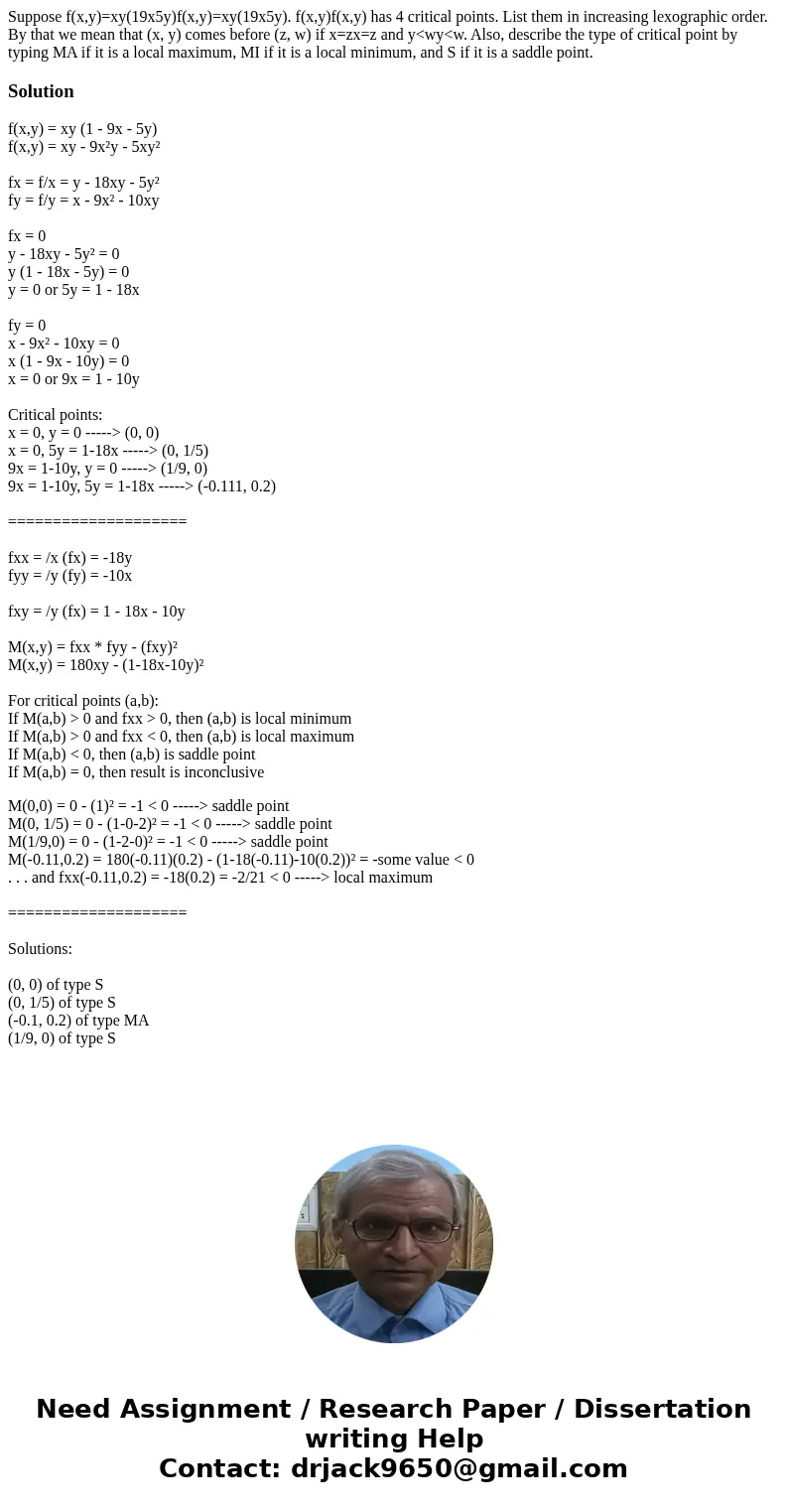Suppose fxyxy19x5yfxyxy19x5y fxyfxy has 4 critical points Li
Suppose f(x,y)=xy(19x5y)f(x,y)=xy(19x5y). f(x,y)f(x,y) has 4 critical points. List them in increasing lexographic order. By that we mean that (x, y) comes before (z, w) if x=zx=z and y<wy<w. Also, describe the type of critical point by typing MA if it is a local maximum, MI if it is a local minimum, and S if it is a saddle point.
Solution
f(x,y) = xy (1 - 9x - 5y)
f(x,y) = xy - 9x²y - 5xy²
fx = f/x = y - 18xy - 5y²
fy = f/y = x - 9x² - 10xy
fx = 0
y - 18xy - 5y² = 0
y (1 - 18x - 5y) = 0
y = 0 or 5y = 1 - 18x
fy = 0
x - 9x² - 10xy = 0
x (1 - 9x - 10y) = 0
x = 0 or 9x = 1 - 10y
Critical points:
x = 0, y = 0 -----> (0, 0)
x = 0, 5y = 1-18x -----> (0, 1/5)
9x = 1-10y, y = 0 -----> (1/9, 0)
9x = 1-10y, 5y = 1-18x -----> (-0.111, 0.2)
====================
fxx = /x (fx) = -18y
fyy = /y (fy) = -10x
fxy = /y (fx) = 1 - 18x - 10y
M(x,y) = fxx * fyy - (fxy)²
M(x,y) = 180xy - (1-18x-10y)²
For critical points (a,b):
If M(a,b) > 0 and fxx > 0, then (a,b) is local minimum
If M(a,b) > 0 and fxx < 0, then (a,b) is local maximum
If M(a,b) < 0, then (a,b) is saddle point
If M(a,b) = 0, then result is inconclusive
M(0,0) = 0 - (1)² = -1 < 0 -----> saddle point
M(0, 1/5) = 0 - (1-0-2)² = -1 < 0 -----> saddle point
M(1/9,0) = 0 - (1-2-0)² = -1 < 0 -----> saddle point
M(-0.11,0.2) = 180(-0.11)(0.2) - (1-18(-0.11)-10(0.2))² = -some value < 0
. . . and fxx(-0.11,0.2) = -18(0.2) = -2/21 < 0 -----> local maximum
====================
Solutions:
(0, 0) of type S
(0, 1/5) of type S
(-0.1, 0.2) of type MA
(1/9, 0) of type S

 Homework Sourse
Homework Sourse